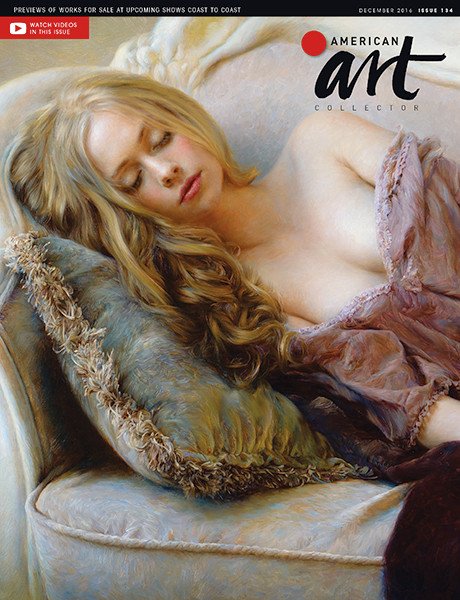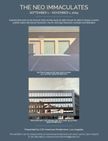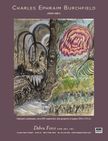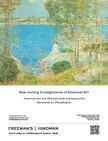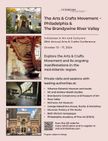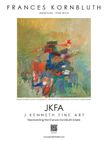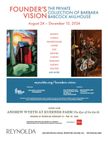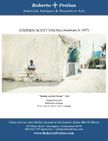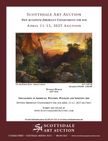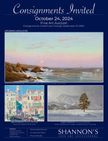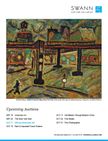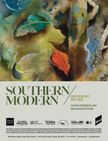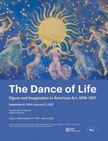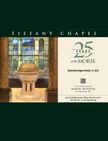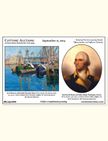Bringing together nine artists and 30 bodies of work, CW American Modernism, based in Los Angeles, presents the special exhibition, The Neo Immaculates. The title, coined by the gallery, encapsulates a unique style that’s clean and minimalistic, “with clearly defined lines and smooth—almost machine-like—surfaces,” describes gallery owner, Chris Walther.
 Marina Stern (1928-2017), Large Twin Tanks, 1971-75. Oil on canvas, 50 x 50 in., signed and dated verso.
Marina Stern (1928-2017), Large Twin Tanks, 1971-75. Oil on canvas, 50 x 50 in., signed and dated verso.
These artists, producing from the 1960s through the 80s, were once referred to as “new realist” or “synthetic realist,” but the term “neo immaculate” seemed most appropriate to the gallery, since these artists are heirs to the Immaculate School, a label used in the 1920s as an alternative to precisionism. “We’ve been interested in how the practices of these artists morphed over time, as well as how two subsequent generations of artists picked up the mantle of the precisionists to create a new form of synthetic realism that was also influenced by pop art, hard edge abstraction, surrealism and even minimalism,” says Walther.
 Edmund Lewandowski (1914-1998), Structural Steel Systems, 1960. Oil on canvas, 38 x 25 in., signed and dated lower right.
Edmund Lewandowski (1914-1998), Structural Steel Systems, 1960. Oil on canvas, 38 x 25 in., signed and dated lower right.
He continues, “Informed by photography, principle forms are simplified and compositions severely cropped. Devoid of figures, neo immaculate works are nevertheless filled with the creations of humanity. Many of the neo immaculates celebrated the beauty of commonplace forms—office buildings, barns, bridges, factories, water tanks, highways, doors, windows and streetlights—all perfected by the hand of the artist through the elimination of extraneous details and any signs of wear or deterioration.”
 Lowell Nesbitt (1933-1993), Dark Red Tulips, 1974. Oil on canvas, 40 x 30 in., signed, dated and titled verso.
Lowell Nesbitt (1933-1993), Dark Red Tulips, 1974. Oil on canvas, 40 x 30 in., signed, dated and titled verso.
Walther adds that the neo immaculates shared a common visual vocabulary as well as an admiration for the first generation precisionists, in particular Charles Sheeler and Charles Demuth. “Most of the artists in The Neo Immaculates did not know one another,” he explains. “They depicted similar subjects and developed similar approaches independently through their mutual concern for the interplay of light and shadow on the otherwise neglected and unseen structures of everyday life.”
 Robert Herrmann (1922-1996), Pleasant Ridge, 1966-7. Oil on Masonite, 16 x 24 in.
Robert Herrmann (1922-1996), Pleasant Ridge, 1966-7. Oil on Masonite, 16 x 24 in.
A fine example is the exhibition painting Large Twin Tanks, circa 1971-1975, executed by Marina Stern (1928-2017). “We are honored to represent the estate of Stern, an artist who burst onto the New York art world in the mid-1960s with her ‘talking pop’ works,” says Walther. “By the beginning of the 1970s, she abandoned these works in favor of her meticulously rendered depictions of cities, factories and buildings, such as Large Twin Tanks. She was an explicit adherent to the teaching of artists like Charles Sheeler.”
 John Kalamaras (1934-2020), Untitled (Green Shutters), 1972. Mixed media on Masonite, 20 x 16 in., signed and dated verso.
John Kalamaras (1934-2020), Untitled (Green Shutters), 1972. Mixed media on Masonite, 20 x 16 in., signed and dated verso.
In the show painting Pleasant Ridge, circa 1966-67, we find Robert Herrmann’s (1922-1996) fascination with the precisionists, and more specifically, Charles Demuth. “Herrmann was an art historian and admirer of the precisionists,” Walther echoes. “His masters thesis was on The Stylistic Development of Charles Demuth. Herrmann kept his artistic practice a secret, [but] after his death, Herrmann’s family discovered a treasure trove of his paintings, which have a beauty and sophistication which bely the fact he was a self-taught artist.”
Better known among the artists in the exhibition, is Lowell Nesbitt (1933-1993), whose large floral works like Dark Red Tulips “pays homage to Georgia O’Keeffe’s precisionist flowers from decades before,” says Walther.
 Edward Biberman (1905-1986), Coronado Bridge #2, 1971. Oil on masonite, 27½ x 48 in., signed lower right.
Edward Biberman (1905-1986), Coronado Bridge #2, 1971. Oil on masonite, 27½ x 48 in., signed lower right.
Yet another significant highlight is Edmund Lewandowski’s (1914-1998) Structural Steel Systems, 1960. One of the second-generation precisionists who painted from the 1930s into the 1990s. “We are excited to include [this painting] in the exhibition because it provides a direct link to the precisionists, as well as Lewandowski’s own metamorphosis into an updated neo immaculate style.” Walther shares.
The Neo Immaculates is available online as well as in the CW American Modernism gallery space by appointment September 1 through November 1.
Powered by Froala Editor
